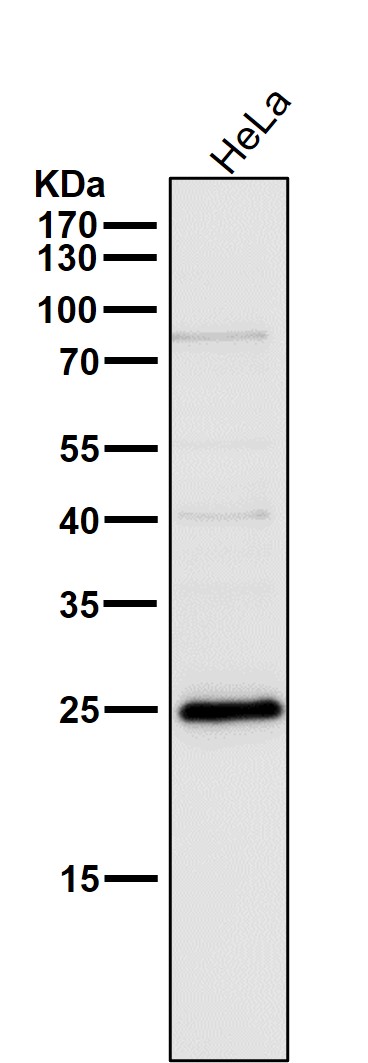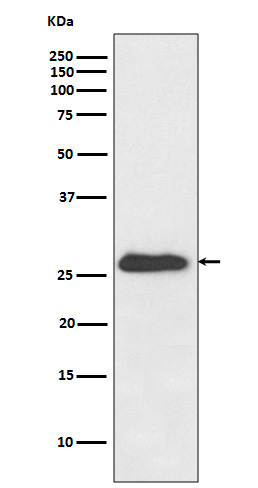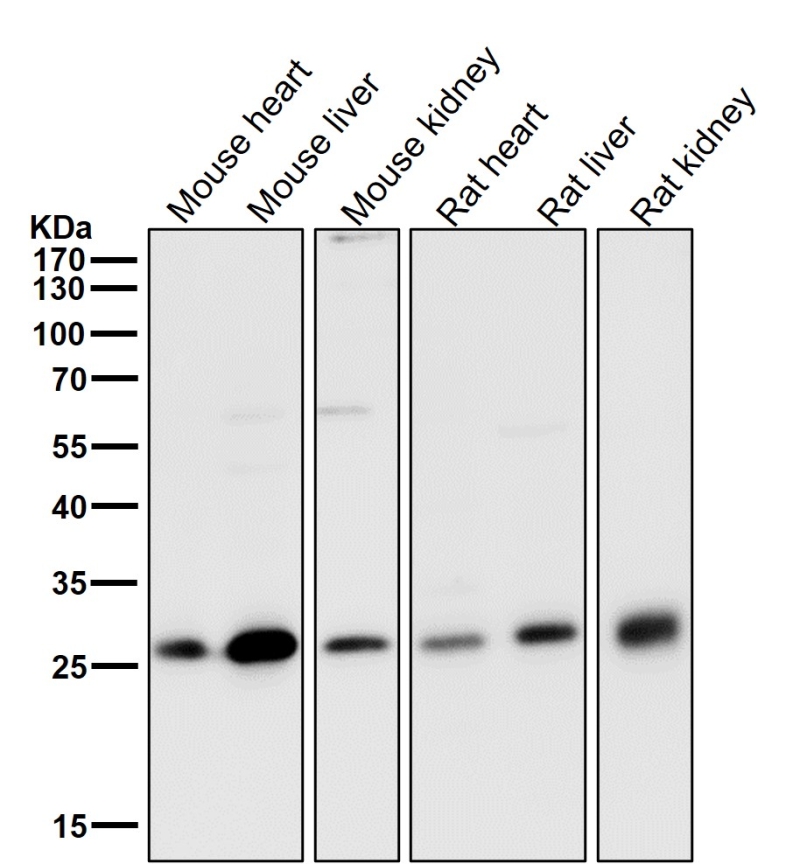


| WB | 1/1000-1/2000 | Human,Mouse,Rat |
| IF | 咨询技术 | Human,Mouse,Rat |
| IHC | 咨询技术 | Human,Mouse,Rat |
| ICC | 技术咨询 | Human,Mouse,Rat |
| FCM | 1/20-1/100 | Human,Mouse,Rat |
| Elisa | 咨询技术 | Human,Mouse,Rat |
| Aliases | QR2; DHQV; DIA6; NMOR2;;NQO2 |
| WB Predicted band size | 26 kDa |
| Host/Isotype | Rabbit IgG |
| Antibody Type | Primary antibody |
| Storage | Store at 4°C short term. Aliquot and store at -20°C long term. Avoid freeze/thaw cycles. |
| Species Reactivity | Human,Mouse,Rat |
| Immunogen | A synthesized peptide derived from human NQO2 |
| Formulation | Purified antibody in PBS with 0.05% sodium azide,0.05% BSA and 50% glycerol. |
+ +
以下是关于NQO2抗体的3篇参考文献,按研究领域分类简要概括:
1. **文献名称**:*The Role of NQO2 in Melanoma Progression and Targeted Therapy Resistance*
**作者**:Chen et al. (2020)
**摘要**:本研究利用NQO2抗体通过免疫组化分析黑色素瘤组织,发现NQO2高表达与患者预后不良相关,并验证其通过调控氧化应激通路促进肿瘤耐药性。
2. **文献名称**:*Immunohistochemical Localization of NQO2 in Alzheimer's Disease Brain Tissues*
**作者**:Smith et al. (2018)
**摘要**:作者使用特异性NQO2抗体对阿尔茨海默病患者脑组织进行染色,发现NQO2在淀粉样斑块周围神经元中异常聚集,提示其可能参与神经退行性病变过程。
3. **文献名称**:*Development of a High-Affinity Monoclonal Antibody for Human NQO2 and Its Application in Drug Screening*
**作者**:Wang et al. (2022)
**摘要**:该文献报道了一种新型NQO2单克隆抗体的开发,通过ELISA和Western blot验证其特异性,并成功应用于高通量药物筛选系统,用于靶向NQO2的抑制剂发现。
如需更具体的研究方向或实验方法(如Western blot、流式细胞术等),可进一步补充说明调整内容。
The NAD(P)H:quinone oxidoreductase 2 (NQO2), also known as quinone reductase 2 (QR2), is a flavoprotein enzyme involved in cellular redox reactions. Unlike its homolog NQO1. NQO2 functions independently of NAD(P)H, utilizing dihydronicotinamide riboside (NRH) as an electron donor to reduce quinones and other substrates. This enzyme plays a role in metabolic detoxification, oxidative stress modulation, and activation of specific prodrugs. Dysregulation of NQO2 has been linked to pathological conditions, including cancer, neurodegenerative diseases (e.g., Alzheimer’s), and metabolic disorders, making it a target for therapeutic research.
NQO2 antibodies are essential tools for studying its expression, localization, and function in biological systems. These antibodies enable detection and quantification of NQO2 via techniques like Western blotting, immunohistochemistry (IHC), and immunofluorescence (IF). Researchers utilize them to explore tissue-specific expression patterns, correlations with disease progression, and responses to pharmacological inhibitors. Notably, NQO2’s ability to activate neurotoxic quinones and its overexpression in certain cancers have spurred interest in developing small-molecule inhibitors, with antibodies aiding in preclinical validation. Challenges in antibody development include ensuring specificity due to structural similarities with NQO1 and optimizing cross-reactivity across species in experimental models.
×